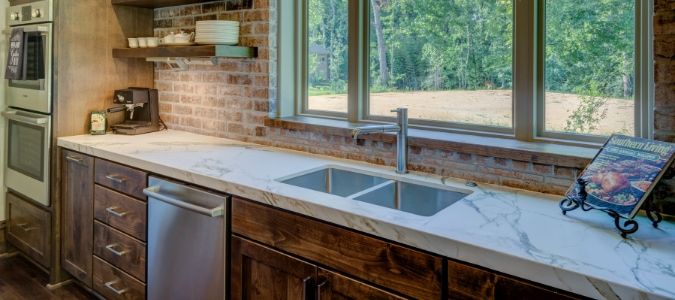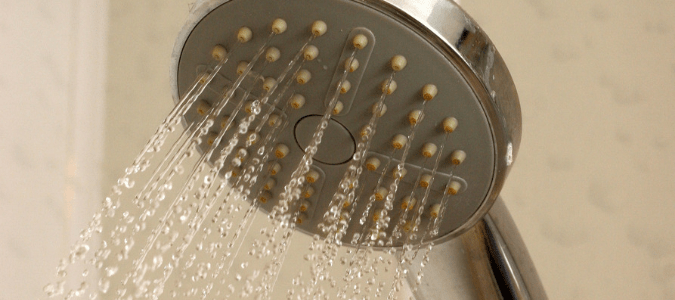Tankless water heaters have become popular as more homeowners look for energy savings and more sustainable appliances. Compared to traditional tank water heaters, tankless units save homeowners about 30 percent or more on their energy usage for such a unit.
Traditional tank water heaters use energy–whether fueled by electricity or gas–in standby mode. They hold the hot water in reserve, waiting for someone to need it. How does a tankless water heater work? Tankless models heat the water as needed. You will have a momentary delay while the hot water runs through your pipes, but generally, no more heating, depleting and waiting. But, how do you know what size water heater you need if you go tankless?
If you have a tankless unit that is too small for your needs, you will run out of hot water when you might need it the most. If you purchase a unit that is too large, you will be wasting energy by heating more water than needed. Ideally, you will have a tankless unit installed that aligns with the water usage for you and others in your household. Some households would benefit from installing two units. A licensed plumber can talk you through your home needs and which size tankless water heater would best fit those needs. Then, they can install the water heater for you.
Calculating Your Needs
When a professional calculates your water needs, they will first determine two things: What is your maximum need for hot water at any point in time, and how much water per minute can the tankless unit heat up by a certain number of degrees?
The measurement of how much water can be heated per minute is measured in gallons per minute or GPM. Tankless units’ heating capabilities range from 2 GPM to about 12 GPM. Typically, 5 GPM to 10 GPM is sufficient to meet most households’ needs. When looking at specific units, note that the number of GPMs listed by the manufacturer is the maximum amount of water that can be heated per minute. In real usage, you will almost certainly see a lower GPM number.
The temperature of the water coming into the water heater is also important. Warmer incoming water means the appliance has to work less to bring the output to your desired temperature. For instance, if the water that comes into your water heater is 75 degrees and you want what comes out of your shower to be 100 degrees, then the appliance will need to make the water 25 degrees warmer. However, if you live in a cooler climate and the incoming water is 60 degrees, your appliance will have to work harder and to get the water to the desired 100 degrees. When an appliance has to do more work, it will use more energy, costing you more money.
To get an idea of which size unit you need, your professional will figure out how many gallons of water you need per faucet, shower, washing machine, dishwasher, etc., and how much you need to heat that water. Again, this number is the peak maximum usage, not what you would use daily. A plumbing expert has experience matching the right tankless unit with each client’s household.
Maintenance for Tankless Water Heaters
Though tankless water heaters are more energy efficient, they are not without their own requirements. Tankless units do not need as much attention as traditional tank water heaters. However, you will need to do a certain amount of maintenance to keep the appliance in peak working order and prevent your tankless water heater from not heating.
Filter Maintenance
Most tankless units include a filter on the water line to help keep the line open and free of scaling, hard water and sediment. All these can reduce the appliance’s efficiency and wind up traveling through your plumbing into your dishwasher, washing machine and water fixtures. Your tankless unit might have a filter you can clean and reuse, or you might need to completely replace it. Take a look at your owner’s manual if you are unsure. If your tankless unit does not include a filter on the water line, you can install one to increase the appliance’s life.
You might want to make a point to ask this before you purchase your tankless unit. A professional can point you toward the best unit for your needs. They can also perform the maintenance for you as part of a service plan. Talk with them about what works best for your home and lifestyle.
Important Maintenance Tasks
Besides the filter on the water line, your tankless unit might also include a filter that goes between the air intake pipe and the fan. Anything that this filter catches, whether it is dirt or bugs or other types of debris, will impede the airflow and cause the tankless unit to run below its peak efficiency.
This is fairly easy to take care of, but check the manual for your particular unit. It might be a matter of unscrewing a piece, removing the filter, washing and drying it and then placing it back in the unit. Don’t attempt to do this yourself without consulting the manual.
The most important maintenance task is descaling and flushing a tankless unit regularly. Even with a few filters, your unit will eventually get a buildup of mineral deposits and other matter. If you have hard water, you will see a larger buildup sooner than those with a water softener. For hard water homes, an annual flush is a general recommendation. If you have a water softener, you might be able to go 3 to 5 years between flushes. Regardless of this general guideline, getting a professional to look over your tankless water heater once a year is a good idea. They know how to maintain a tankless unit correctly and verify whether you need to flush.
Tankless Water Heater Noise
Don’t be alarmed if you hear noises coming from your water heater when it’s heating up water. When it clicks on and begins to heat the water you need, you will hear a reasonable amount of noise. You might need to call a pro to investigate if you hear noises when the tankless unit is not heating water.
Vibrating and Loud Noise
If your tankless water heater is making noises when it’s not heating water, it could be due to water being pulled from the unit to another water-consuming appliance, which can cause vibration and loud noises. If this is the case, a plumbing professional will likely need to install a check valve in the water line. This is so that the other plumbing fixtures in your home don’t affect the work of the water heater. You might look at a dirty flow sensor in a gas-fueled unit. This part controls the amount of gas that flows to the appliance.
Noise could also come from a ventilation issue or a pressure valve that has been improperly set or has a defect of some kind. Insects and even lizards often crawl into such tankless units. This can throw off the ventilation system and create some very loud noises. An expert will know how to determine what is making the noise and can fix it.
Humming Noise
A humming noise could mean a loose water heating element. This makes the water flowing around the element vibrate, creating noise. Fortunately, this isn’t a major issue and can quickly be addressed by a plumber.
Hissing Noise
If you hear a hissing noise, it’s wise to contact a plumber. A hissing noise can indicate a leak somewhere in the system. A plumber can come to inspect your system and locate any leaks.
Screeching Noise
A screeching could indicate a valve that isn’t opened completely, forcing water and air through a smaller space than necessary. In this case, you can listen closely to each water faucet or appliance using water to hear where you need a repair. Be careful, though, since it can be very easy to get a steam burn if you try to make a fix yourself.
If your tankless unit is making strange noises, contact a reputable plumber. While it’s normal for your unit to make some noises, it’s better to err on the side of caution when it comes to water heaters.
ABC Can Take Care of All Your Tankless Water Heater Needs
There are many benefits of tankless water heaters. However, installing and maintaining a tankless water heater is a job best left to a professional. At ABC Home & Commercial Services, our specialists are highly trained and can take care of any water heater service you may need. We even have pros available 24/7 for those repairs that just can’t wait.



